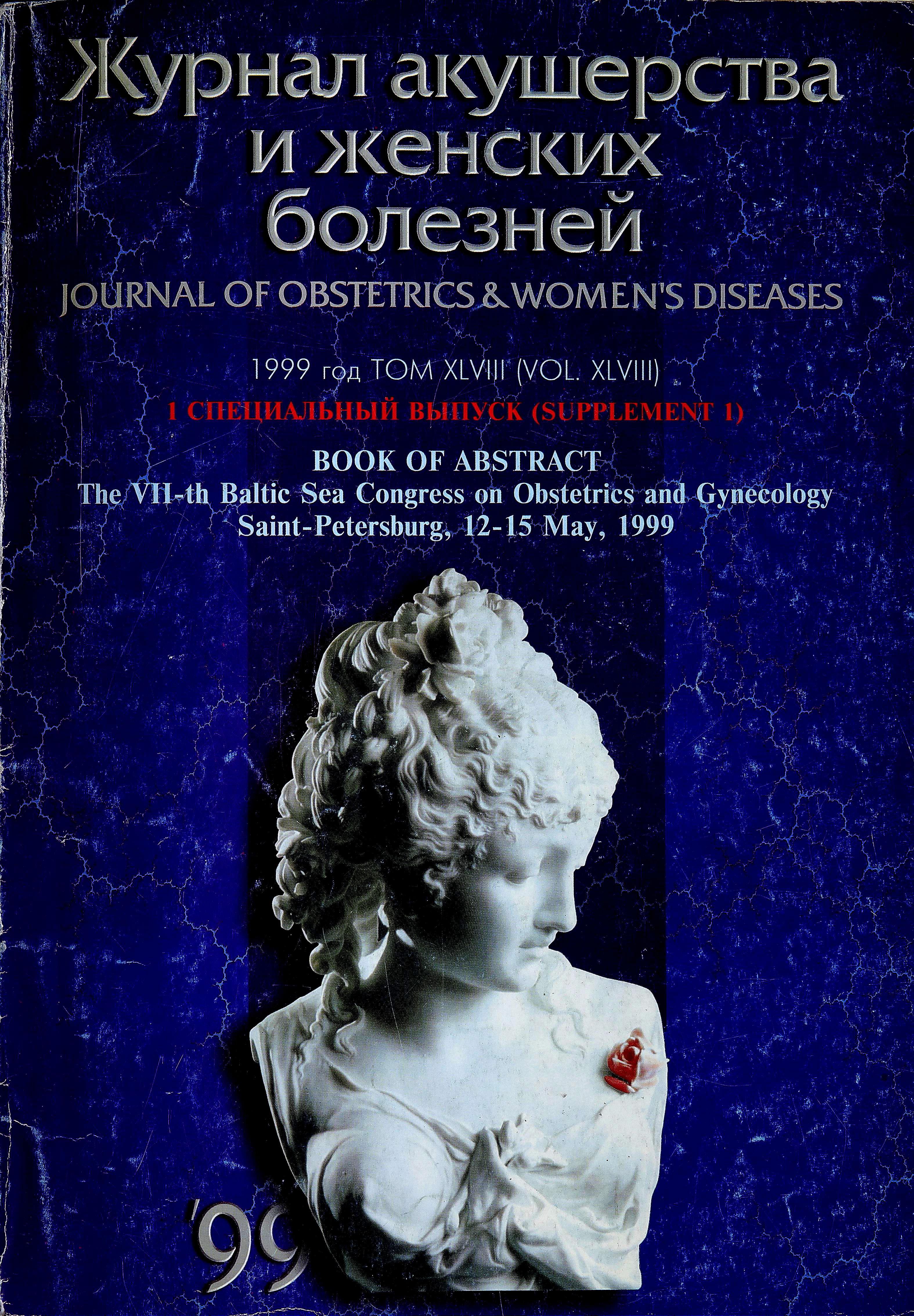Intrauterine growth retardation: CTG, ultrasound biometrics and Doppler blood flow
- 作者: Babayan A.1, Akounz K.1, Vartanyan J.1, Schmidt W.2
-
隶属关系:
- Yerevan State University
- Hamburg University
- 期: 卷 48, 编号 5S (1999)
- 页面: 33-33
- 栏目: Articles
- ##submission.dateSubmitted##: 15.02.2022
- ##submission.dateAccepted##: 15.02.2022
- ##submission.datePublished##: 15.12.1999
- URL: https://journals.eco-vector.com/jowd/article/view/100785
- DOI: https://doi.org/10.17816/JOWD100785
- ID: 100785
如何引用文章
全文:
详细
Intrauterine fetal growth retardation (IUGR) is still a problem in obstetrics. The IUGR plays an important role in the perinatal morbidity and mortality. IUGR is a multifactorial process having heterogeneous causes. A causal treatment is not yet available. At the Hamburg University Hospital, the incidence of IUGR in premature babies and newborns was 19,1% over five years (1993-97).
全文:
Intrauterine fetal growth retardation (IUGR) is still a problem in obstetrics. The IUGR plays an important role in the perinatal morbidity and mortality. IUGR is a multifactorial process having heterogeneous causes. A causal treatment is not yet available. At the Hamburg University Hospital, the incidence of IUGR in premature babies and newborns was 19,1% over five years (1993-97). The percentage of premature babies with IUGR is 18,6%. 220 patients were examined between January 1996 and July 1997. The overall mortality was 4,1%, the perinatal mortality was 3,6% and the neonatal mortality was 0,5%. In 1,4% of the 220 patients IUGR occurred. All cases with IUGR presented with severest IUGR associated with a weight below the 3rd percentile. 21+1,6 cardiotocograms (CTG) per patient were registered on average. In 59,5% of the patients we detected noticeable CTG-findings (FSC7), in 40,5% CTGs were unremarkable till the delivery (FSC 8-10). Regression analysis showed that the pathological CTGs of 7 fetus with IUGR were more often accompanied by a pH 7,20 and Apgar 7 in the intrapartal phase (odds-ratio 3,1, p<0,01 and odds-ratio 2,4, p<0,05). The time difference between the first pathological Doppler flow findings (gestation age - 33 w 6 days) and the first borderline CTG recording (FSC 5-7 at 35 w 5 days) was 13 days on average. In cases with pathological Doppler flow the time till a pathological CTG (FSC4) was detected 18 days on average. The time between the first detection of pathological Doppler flow findings and delivery was 21 days on average compared to 16 days on average after initial diagnosis of borderline CTGs (FSC 5-7) and 7 days on average (median 1,0 day) after initial diagnosis of pathological CTGs (FSC4). In 46 (21%) of the examined patients pathological Doppler flow findings occurred before the first noticeable CTG. In 22 (10%) of all cases with pathological Doppler flow findings no pathological CTG was recorded during the further course of pregnancy. In 21 cases (9,5%) a pathological CTG was present before the first noticeable Doppler flow findings. In 28 fetus (12,7%) GR was symmetrical, in 192 fetus (87,3%) the IUGR was detected by ultrasound biometry. In 124 pregnant women with pathological Doppler flow findings 15 fetus (12,1%) had an “enddiastolic zero flow” in the fetal aorta and 16 fetuses (12,9%) in the umbilical artery. “Reverse flow” in the fetal aorta was detected in 5 (4%) fetus and in the umbilical artery was found in 4 (3,2%) fetus.
作者简介
A. Babayan
Yerevan State University
编辑信件的主要联系方式.
Email: info@eco-vector.com
亚美尼亚, Yerevan
K. Akounz
Yerevan State University
Email: info@eco-vector.com
亚美尼亚, Yerevan
J. Vartanyan
Yerevan State University
Email: info@eco-vector.com
亚美尼亚, Yerevan
W. Schmidt
Hamburg University
Email: info@eco-vector.com
德国, Hamburg
参考
补充文件





